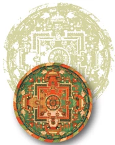In many ways, my favorite works of art are gifts given to me at the end of a long, difficult, but satisfying treatment, by my patients. One woman gave me a print of one of Michelangelo’s unfinished sculptures from the group, I prigioni. The powerful piece shows a person emerging from the stone and is said to represent the eternal human struggle with material existence. But I see it also as a metaphor of the therapeutic epic: the struggle to come into being and emerge from a static, stone-like state into life with panache and vitality. Yet the image can be seen in reverse; the person being drawn back into stone. It reminds me that we do not always know which way the patient or ourselves for that matter is heading. Like all great art, the artist holds a moment of intense ambiguity and endless curiosity. Not surprising, this Michelangelo was given to me by a person with a severe issues about body image.
The Michelangelo prisoner was chosen for me; I treasure it. It makes me happy to enter my therapeutic space and see it there. But my true chosen and beloved work o art is a painting by the great Dutch master, Vermeer, “A Woman in Blue Reading a Letter”, that is found in Amsterdam at the Rijksmuseum. The painting depicts a young woman dressed in a blue jacket reading the letter. In the lower foreground, there is a long table and some leather backed chairs. In the higher background, there is a large map of some far distant land, set on the white wall. Each object is accompanied by its shadows. The intensity of her feelings is conveyed subtly, indirectly in the timeless tension between the woman, the letter, the map, and the chairs. The woman herself may be pregnant, but even this is ambiguous. The spectacular blue is made from lapis lazuli, imported, even in the seventeenth century from Afghanistan, giving the hue an inherently international look. The woman is alone in the privacy of her home and yet very much engaged with an absent other. This painting of a woman, pensive, reading, guards and sanctifies my therapeutic space. She is the altarpiece of my temenos.
Jung believed that the fundamental language of the psyche is images, rather than words. Not only do images precede words developmentally, but images remain a universal language in a way that words can never be. The images from this Vermeer provide the therapeutic space a sense of holiness. For me, this painting holds a symbolic representation of the analytic process. The map represents the need analysts have for a guidance or theory, that helps us trace the therapeutic journey. We need to know where we are, and perhaps where we are heading. The pregnancy represents the part of the person that is coming into life but is as yet unborn. During my analysis, although a man, I had a dream that I was pregnant and it was surely true in a symbolic sense. The unconscious, so Jung taught, is always sending us messages, if only we can read them with clarity and serenity. The letter is akin to a message from an intimate but faraway presence. The letter the woman is holding is like a dream or symptom, a message from the unconscious, which seems very far away but, of course, is very close at hand. In Dutch art art historians inform us that depictions of women reading letters, almost always carry love associations, for example, this can be seen in Vermeer's “Girl Reading a Letter at an Open Window”, (c. 1657). In that painting, however, Vermeer showed woman's response to the letter by painting her reflection in the leaded glass window. In the painting of the lady wearing the blue jacket, the observer is drawn not outward, but inward, toward her inner, expectant space. The map, the woman, and letter are all placed between two chairs. Vermeer certainly could not have known about psychotherapy or analysis, but in this picture, I believe, he has symbolically depicted much of its essence.
“A Women in Blue Reading a Letter” continues to fascinate. In February 2013, The Getty Museum, held an online, active imagination contest.[1] They asked people to imagine the first line of the letter, which was then completed by a professional writer. The winning line was: “Let me tell you of the future.” The completed letter ended with the line: “For this ordinary moment speaks to all of us who seek the extraordinary: to love and be loved.” Every day, when I enter my office, I wonder what will be written in the letter today.
Henry Abramovitch Ph.D. is founding-President of Israel Institute of Jungian Psychology and past President of Israel Anthropological Association, as well as Professor in Tel Aviv University Medical School. He supervises routers in developing groups in Poland and Russia and is active in Interfaith Encounter Association. He edited a special edition of Harvest on Erich Neumann.His books include: The First Father, Abraham: Psychology and Culture of a Spiritual Revolutionary, 2nd edition; Brothers and Sisters: Myth and Reality; Therapy as a Performance Art. Correspondence: 5 Katznelson #13, Jerusalem 92621, Israel. Email: abramh@post.tau.ac.il
[1] http://blogs.getty.edu/iris/write-the-opening-line-to-vermeers-lady-in-blue/

